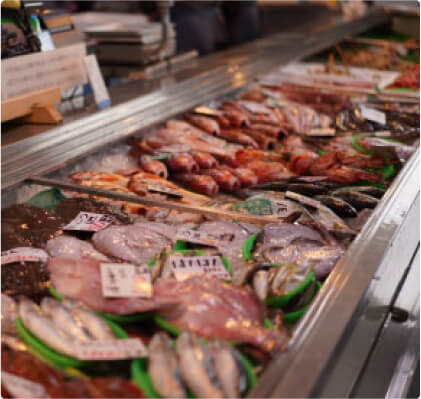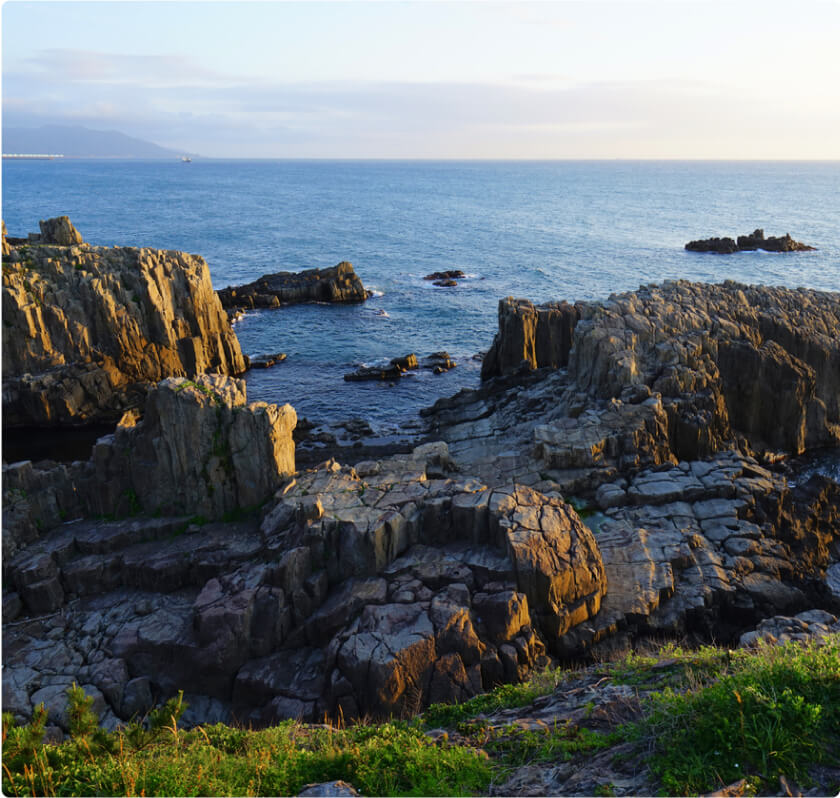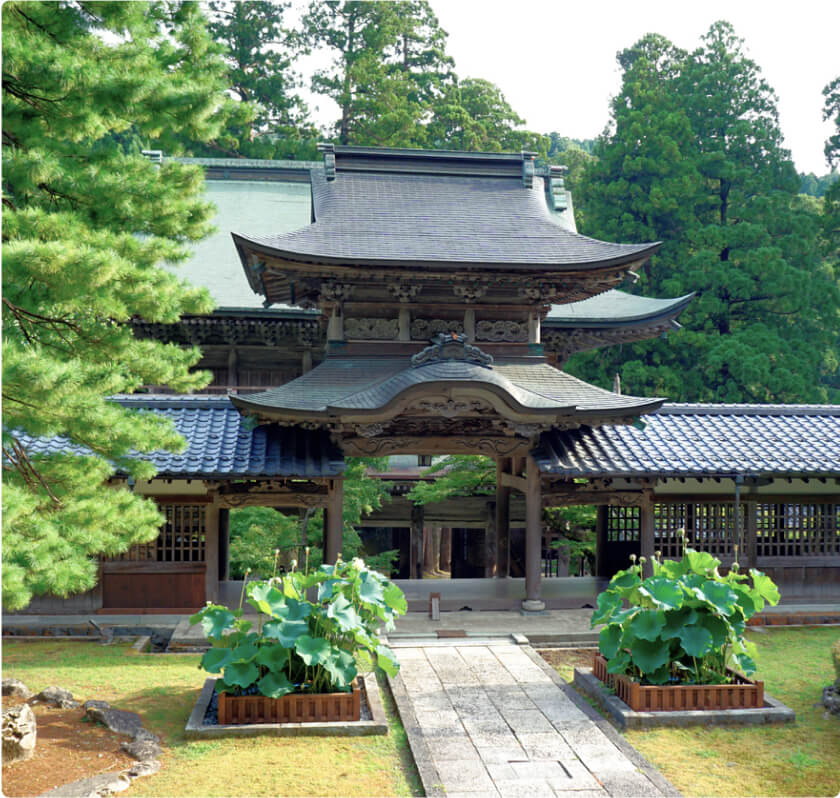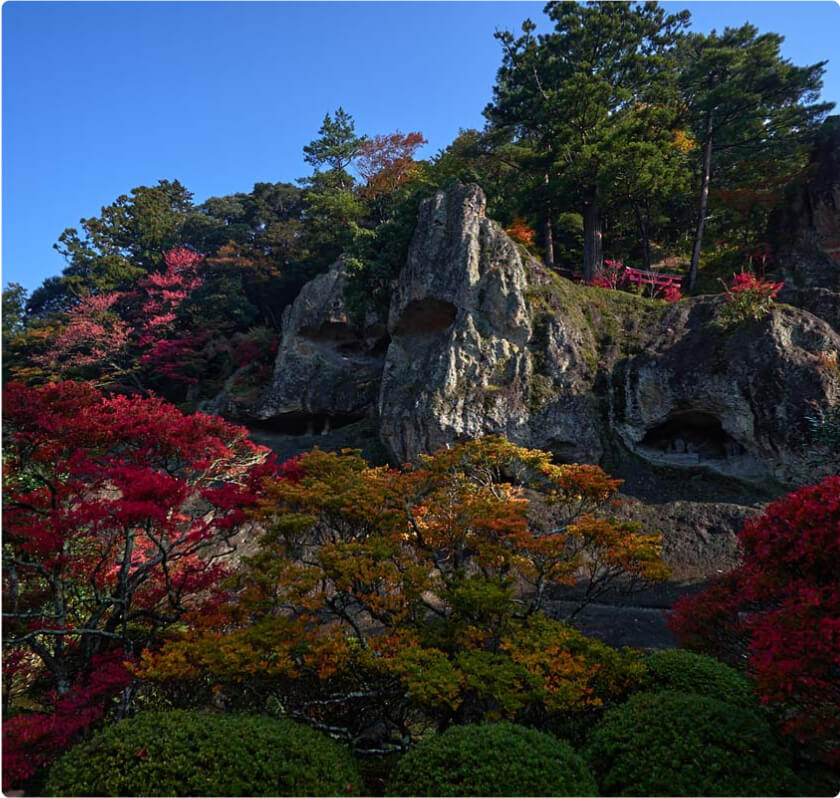チケット
Kaga Travel Guide
1
Yamanaka tour route
Kakusenkei Gorge
While the Kaga City area has three historic hot spring towns, Yamanaka Onsen has always been loved by many for its enchanting landscape created by mountains and rivers. A short walk from its town centre, Kakusenkei Gorge is a lush green area that enjoys the clear flow of the Daishoji River, graceful waterfalls and soothing bird calls.The river is crossed by three bridges. Korogi Bridge, built in the most traditional way using only cypress wood, perfectly complements the surrounding natural scenery. The strikingly modern Ayatori Bridge was designed by TESHIGAHARA Hiroshi (1927-2001), a famous ikebana master and an avant-garde film director. Kurotani Bridge is a stone arch bridge that conjures up romantic images of the 20th century.The 1.3km-long footpath along the banks of the river connects these bridges. The start point of the footpath is Korogi Bridge, the furthest upstream of the three bridges. Passing cedar groves, sparkling waterfalls and luminous clearings, the path offers splendid views at every season. You will find Kakusenkei Kawadoko along the way, a pop-up riverside cafe near Ayatori Bridge. Operating on clear days, this charming cafe with simple tatami seating and bright red parasols is the perfect place to stop by to relax.From here it’s a 500 m walk to Kurotani Bridge, the end of the wonderful footpath. The famous haiku poet MATSUO Basho (1644-1694) of the 17th Century once visited Yamanaka Onsen and praised the picturesque gorge. Located close to the bridge, a rustic hut (Basho-do) contains a small statue of Basho inside.
Address
152 Yamanakaonsen Shimotanimachi,
Kaga, Ishikawa 922-0127
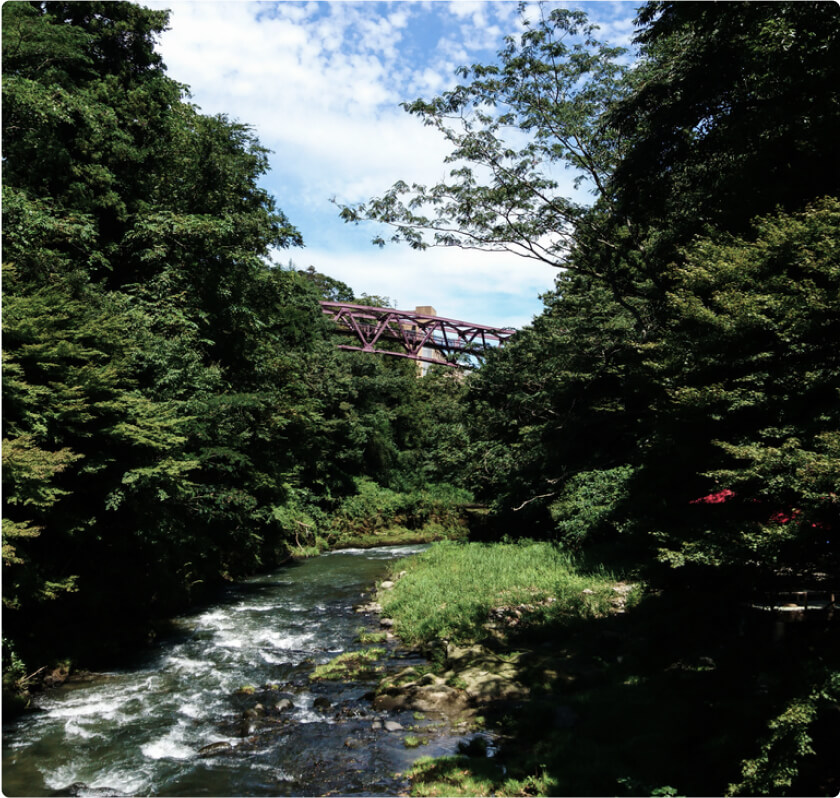
Yamanaka Onsen Soyu: Timeless Soothing Stream
The source of the hot spring in Yamanaka Onsen is said to have been discovered some 1300 years ago by the famous high priest Gyoki (668-749), and the public bathhouse was opened as a sacred place where people could cure their injuries and diseases. In the Edo era (1603-1868), one of the greatest Japanese haiku poets MATSUO Basho (1644-1694) spent time in Yamanaka Onsen to relieve travel fatigue and he applauded its hot springs as some of the best in Japan. He even wrote a haiku about them. Today, Yamanaka Onsen’s public bath is named Kiku no Yu taken from a Basho haiku, and the location hasn’t changed since the town began. It consists of two separate buildings, a men’s bath and a women’s bath, which stand in the square at the centre of town. Soaking in a hot spring is a great way to relax after taking an enchanting stroll amidst the green of Kakusenkei Gorge. You can also enjoy a foot bath outside the Kiku no Yu free of charge.
Address
Re-11 Yunodemachi, Yamanaka
Onsen, Kaga, 922-0124 Ishikawa
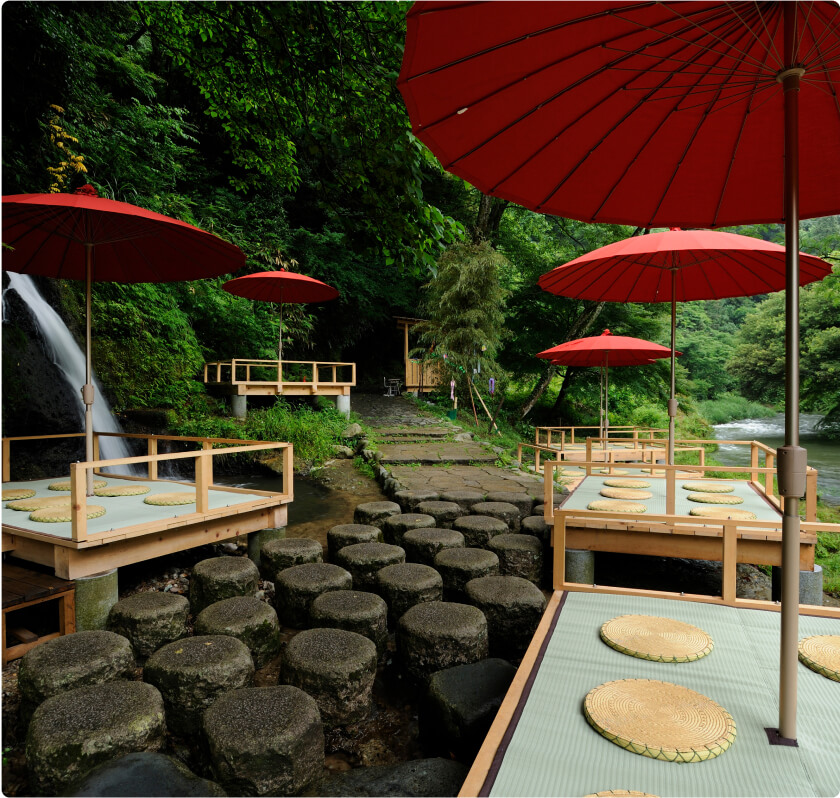
Popular spots nearby
Institute for Yamanaka Lacquerware
The institute is the only training center in Japan that teaches the disciplines of woodturning and lacquering. On weekdays, you can see trainees practicing woodturning. An important collection of works, including pieces designed by some of the most prominent local craftsmen, such as Mr. KAWAGITA Ryozo, who is regarded by Japan as a living national treasure, is displayed in the exhibition room. You can also try your hand at woodturning under the tutelage of a Yamanaka lacquerware artisan (reservations required).
Address
I-270 Yamanakaonsen Tsukatanimachi,
Kaga, Ishikawa 922-0111
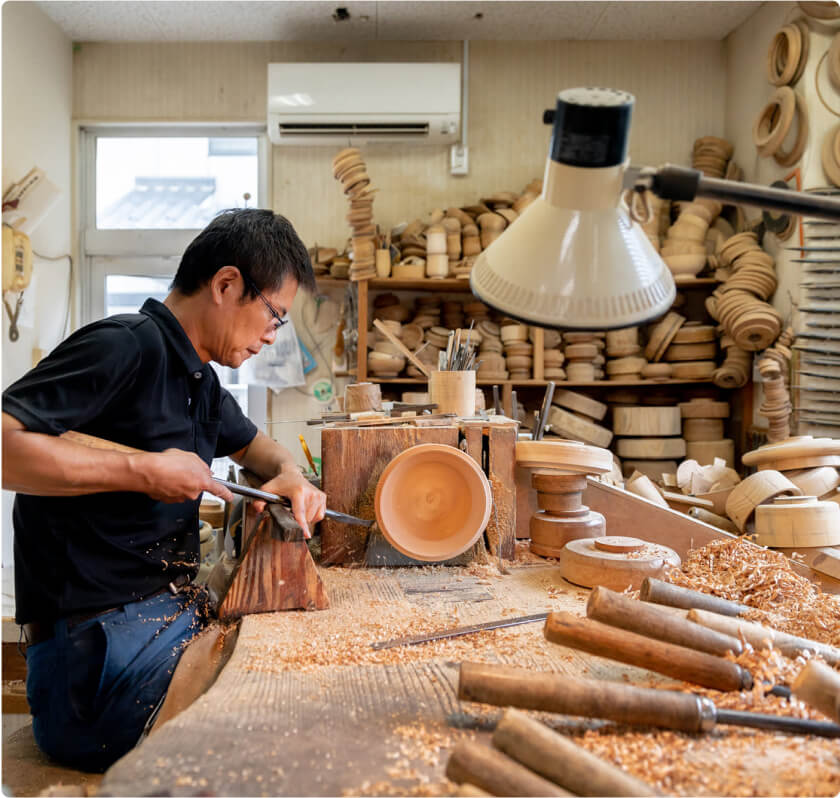
Croquettes from Izumiya (traditional Butcher Shop)
The local Butcher Shop which opened in 1962 is famous for their scrumptious croquettes. You will most likely find a que of tourists and local
Address
16 Minami-machi, Yamanaka
Onsen, Kaga, 922-0129 Ishikawa
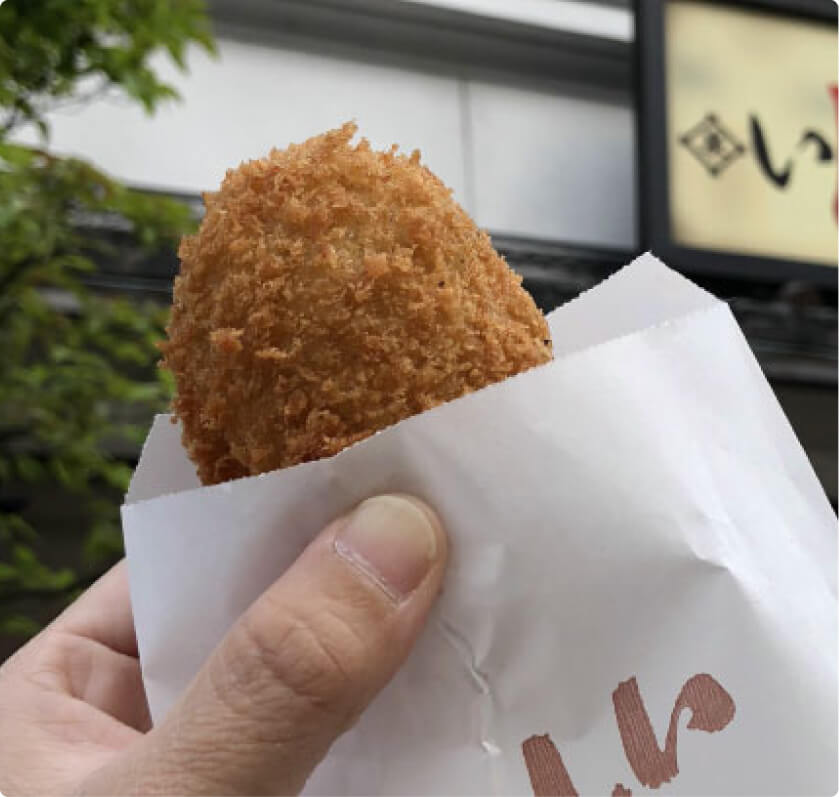
Washubar Engawa (Specialty Sake Bar)
You can wind down your afternoon with drinks selected by Yusuke Shimoki, an award-winning master sake sommelier who opened Washubar Engawa in 2014, almost 10 years ago. This bar has become a secret destination spot for locals and internationals alike. The sake is paired with the most suitable vessel carefully curated by Shimoki himself, selecting from Kutani porcelain to Yamanaka lacquerware created by local craftsmen. The dedication and thought put into each drink is truly divine.
Address
Ro-82 Minami-machi, Yamanaka
Onsen, Kaga, 922-0129 Ishikawa
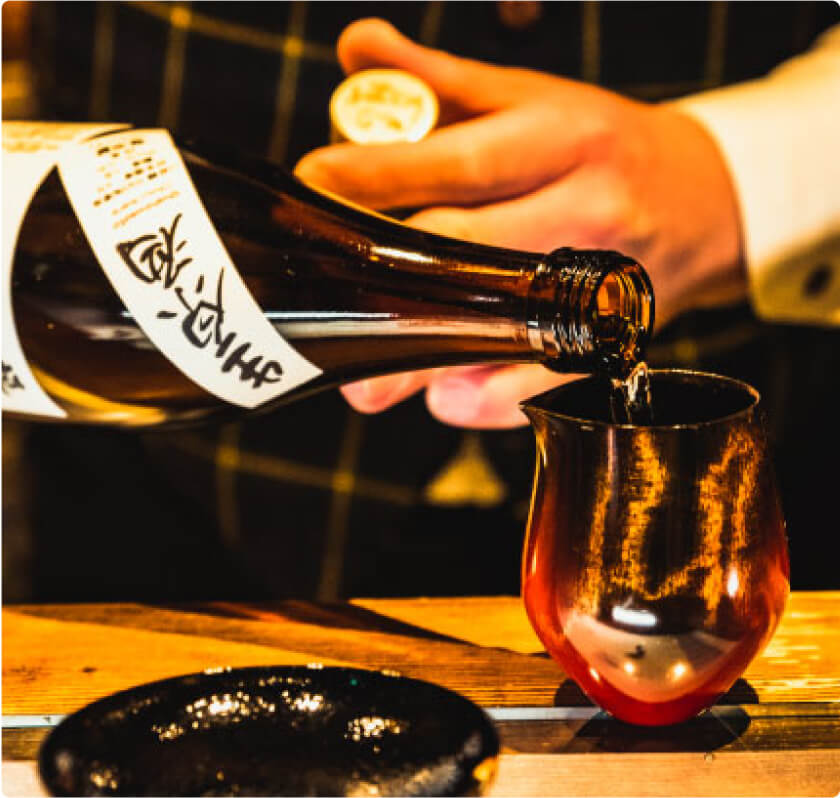
2
Yamashiro tour route
Yamashiro Onsen Soyu: Public Bath at the Centre of ‘Yunogawa’
Historically, Japanese hot spring towns were developed with public bathhouses at the centre. In the Hokuriku dialect, the public bathhouses are called ‘soyu’, and the area surrounding the soyu was called ‘Yunogawa’. The quintessential cityscape of a hot spring town still remains in Yamashiro Onsen. Today’s Yamashiro Onsen has two public bathhouses. While the soyu is a modern facility with standard equipment and multiple baths, the Ko-soyu (literally meaning old public bathhouse) is a unique bathhouse that spectacularly recreates the architecture and bathhouse culture of the Meiji era (1868-1912), and is decorated with the region’s finest crafts such as lacquerware, ceramic tiles and stained glass. As was the bathing style at the time, the bathhouse is not equipped with the usual separate spaces for showering. After the bath you can enjoy relaxing in the rest area on the second floor. From here you can look out over the town of Yamashiro Onsen, and feel the fatigue of travel melt away. In the evening the building is lit up, adding a romantic touch to the town.
Address
2-1 Banshōendōri, Yamashiro
Onsen, Kaga, 922-0256 Ishikawa
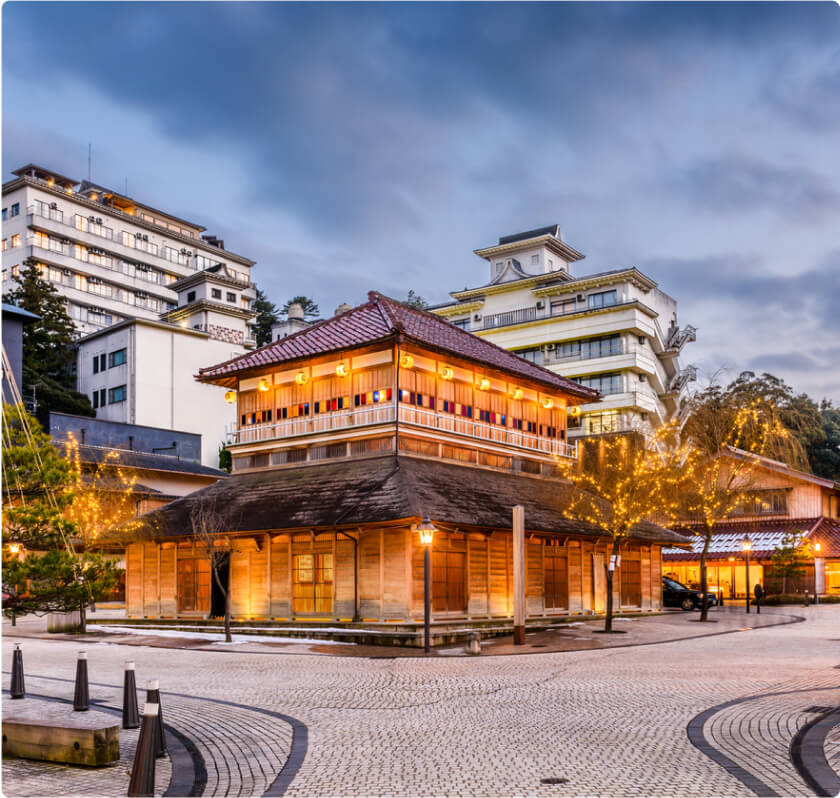
Rosanjin Irohasoan: Where Artists and Culturists Gathered
The renowned artist KITAOJI Rosanjin (1835-1959) was a master calligrapher, woodcarver, and ceramicist. His works have been exhibited at the Museum of Modern Art in New York.This cottage was his home during his stay in Ishikawa in 1915. Originally built as an annex of the Yoshinoya Ryokan (inn) in the early Meiji era (1868-1912), it was a place where the wealthy townsmen of the area would gather to enjoy art and culture. For Rosanjin, who continued to visit and cultivate close connections with these men following his stay, it was a place of learning and solace, and a second home. While staying at the cottage, Rosanjin also learned the art of pottery under the tutelage of SUDA Seika (1862-1927), a Kutani-yaki (Kutani porcelain) artist in Yamashiro Onsen.Today, visitors can see the rooms where he lived and worked preserved almost exactly as he left them.
Address
18-5 Yamashiroonsen,
Kaga, Ishikawa 922-0242
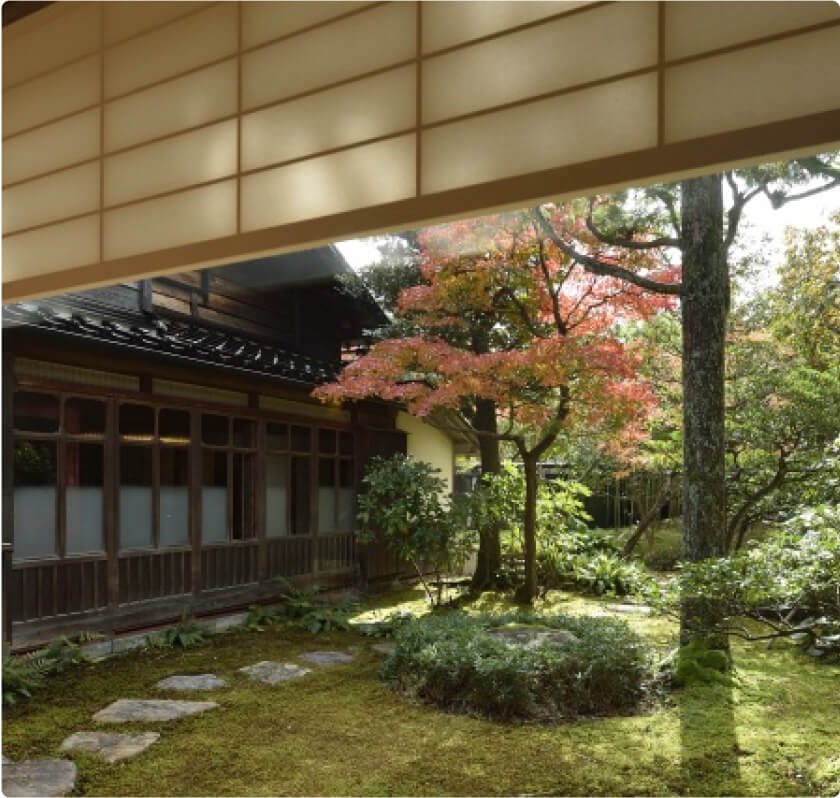
Popular spots nearby
Japanese confectionary shop Roppoyaki Sohachi
You will find many traditional and local sweets shop in Kaga City because tea ceremony is closely intertwined with sweets. The Roppoyaki is made from simple ingredients, flour, eggs, honey, and red bean paste. Fresh eggs are collected every morning and the amount of each ingredient is slightly adjusted each day according to the temperature and humidity. Each bite is a reflection of the history and the dedication this family has in passing down the knowledge from one generation to the next.
Address
14-14, Banshoen-dori, Yamashiro Onsen, Kaga, 922-0256 Ishikawa
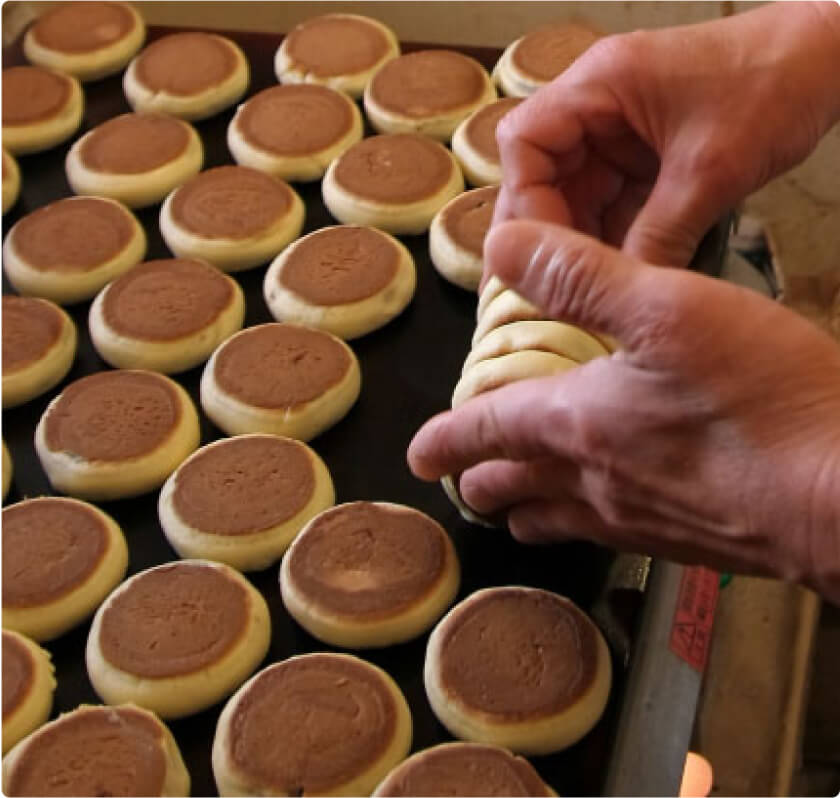
Banshoen Park
A lush green park overlooking Yamashiro Onsen. The walkway is like a maze leading you to the hilltop where you will find Banshoen Sazaedo, a unique, spiral-shaped observatory resembling a shell. From the observatory visitors have a 360 degree view of nature, from the Hakusan mountains to the Sea of Japan, as well as the rooftops of the Yamashiro Onsen town.
Address
Banshoen, Yamashiro Onsen,
Kaga, 922-0242 Ishikawa
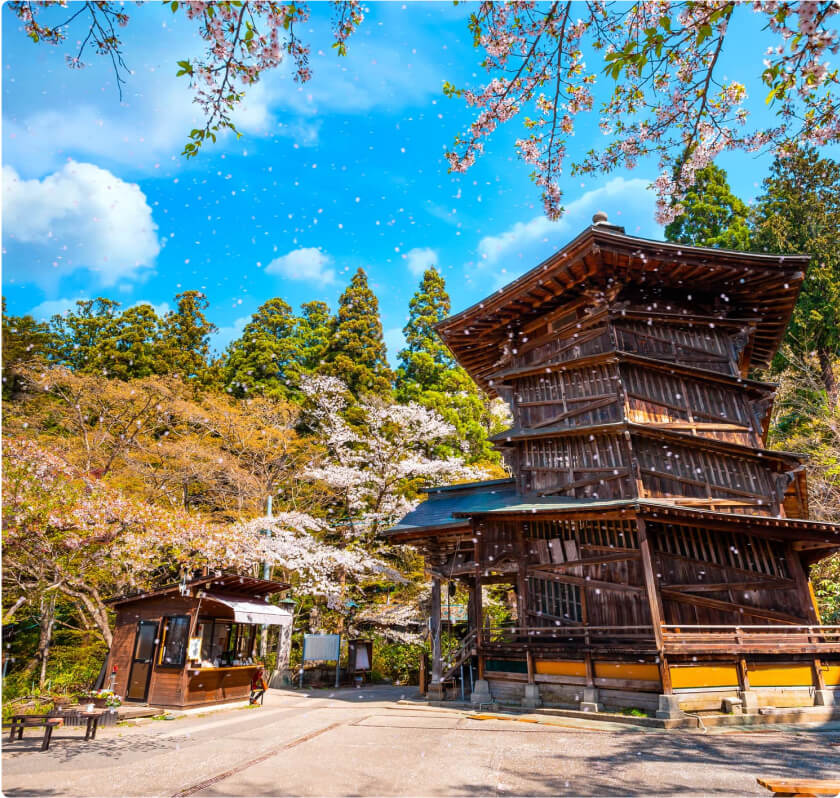
Ichiriki or Ippei (Lunch/Dinner)
Depending on what you are looking for, we suggest Ichiriki for your ultimate Izakaya dining, or Ippei for the most delicious and local sushi joint in Kaga City. It really doesn’t get more local than these two restaurants loved by both locals and returning visitors. Yamashiro Soyu bathhouse is also beautifully lit up at nighttime, making for a scenic walk in the town.
Address
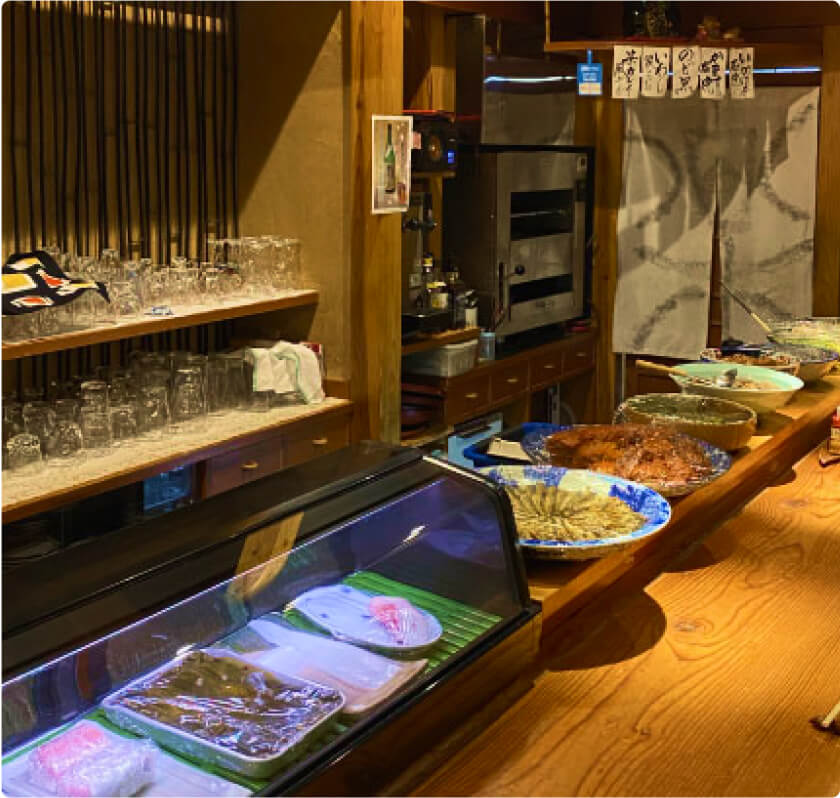
3
Katayamazu tour route
Katayamazu Onsen Soyu: Designed by a World-Renowned Architect
The Kaga City area has three hot spring towns, and the nature of each hot spring, and atmosphere of each onsen town differs. Located on the shores of Lake Shibayama, Katayamazu Onsen’s soyu (public bathhouse) has an open and welcoming atmosphere. Although most onsen facilities are traditional and Japanese in their style, this bathhouse is strikingly modern and was designed by TANIGUCHI Yoshio, a world-renowned architect known for his work in the redesign of the Museum of Modern Art in New York City. The two baths, one overlooking the lake and distant mountains (Kata no yu), the other overlooking the woodland (Mori no yu), are switched between genders every day. You can enjoy a relaxing bath while gazing out at the view, as well as getting to know the locals.
Address
Otsu 65-2 Katayamazu
Onsen, Kaga, 922-0412 Ishikawa
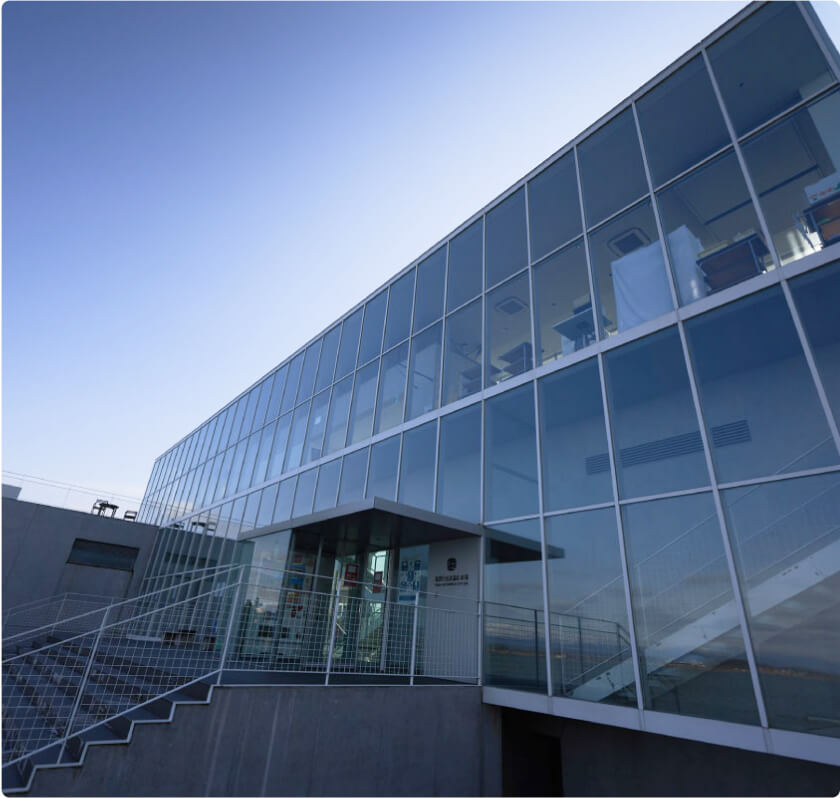
Nakaya Ukichiro Museum of Snow and Ice
This Tour is free but visit options may require an entrance fee
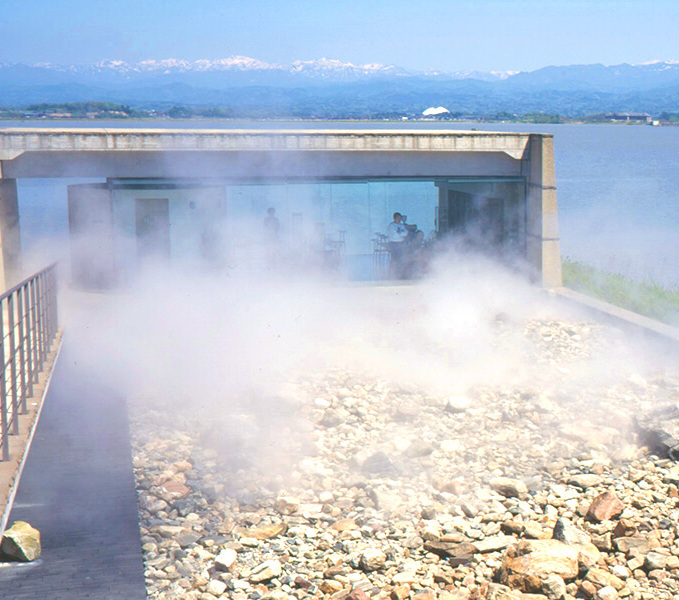
THU also recommends:
4
Daishoji Course
Kutaniyaki Art Museum: Learn About Artisan’s Sophisticated Skills
Kutani-yaki (Kutani porcelain) is widely considered to be one of Japan's most original and highly decorative porcelain styles, with a remarkable artistic legacy that still continues. The Daishoji domain (presently the Kaga City area) began producing porcelain in 1655, in the early Edo era. The porcelain was named Kutani-yaki after Kutani village where the pottery stone was produced and the kilns were built. Since then, Kutani-yaki has evolved to cover a wide range of distinctive styles and approaches that are presented in this museum. While the works of Kutani-yaki are showcased in the exhibition rooms, every corner of the museum has also been decorated with Kutani porcelain stone tiles. On the second floor, you will find a cozy cafe overlooking the museum’s landscaped garden and a shop that sells postcards and books related to Kutani-yaki, as well as finely crafted tableware items.
Address
1-10-13 Daishoji Jikatamachi,
Kaga, Ishikawa 922-0861
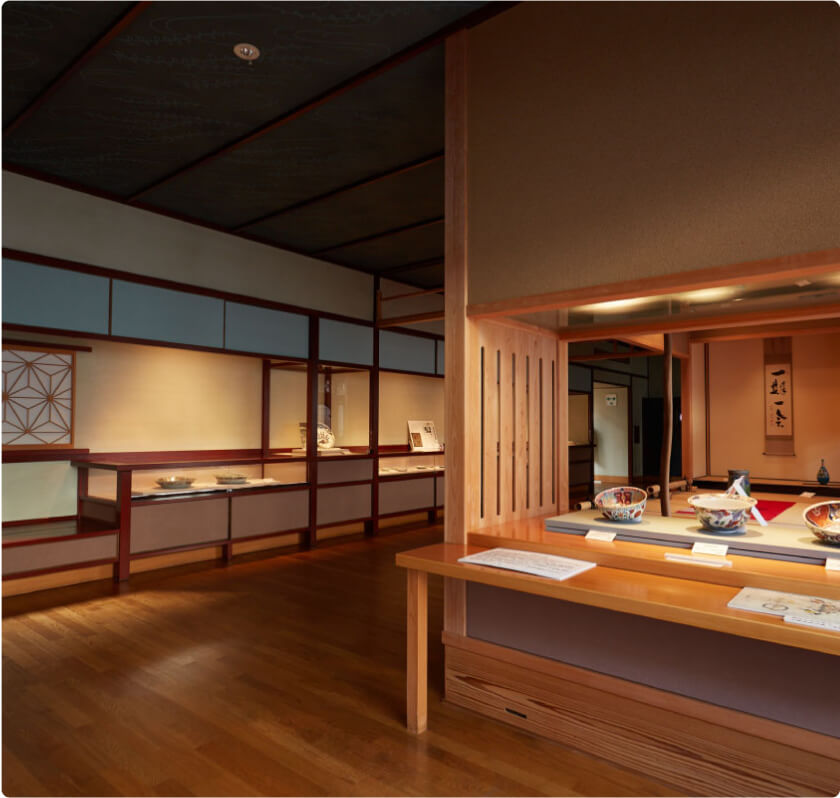
Yamanoshita Temple Area: Enjoy Temple and Shrine Hopping
Once a castle residence for the cadet branch of the Kaga clan (today's Kanazawa), Daishoji is a place flush with history and tradition. Situated in the south-western part of Daishoji, the Yamanoshita Temples Area bears witness to the town’s glorious feudal past. Made up of seven temples and one shrine, it is well acknowledged by historians that all these sacred places were gathered in order to defend the former castle of Daishoji. It is a great place to enjoy temple and shrine hopping, and Zenshoji Temple and Jisshoin Temple are open to the public.
Address
136 Kumasakamachi,
Kaga, Ishikawa 922-0807
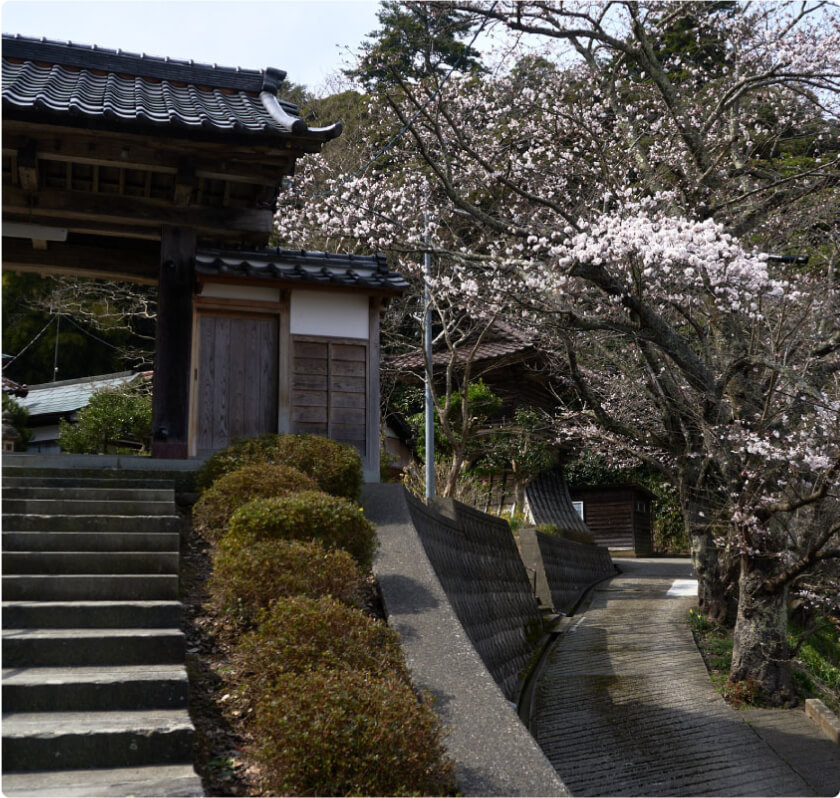
Fuzon Kaga Café & Studio
A café and atelier gallery space in a 130 year old Daishoji Machiya that used to be a fish shop back in the day. You are able to enjoy a delicious drink while relaxing in this timeless space. It is also the studio space to lacquerware and woodturning artist Eiko Tanaka. Every piece is delicately made and exquisite. A member’s only bar can be found on the second floor, if you’re lucky a new friend will let you in.
Address
21 Uomachi, Daishoji, Kaga, 922-0042 Ishikawa
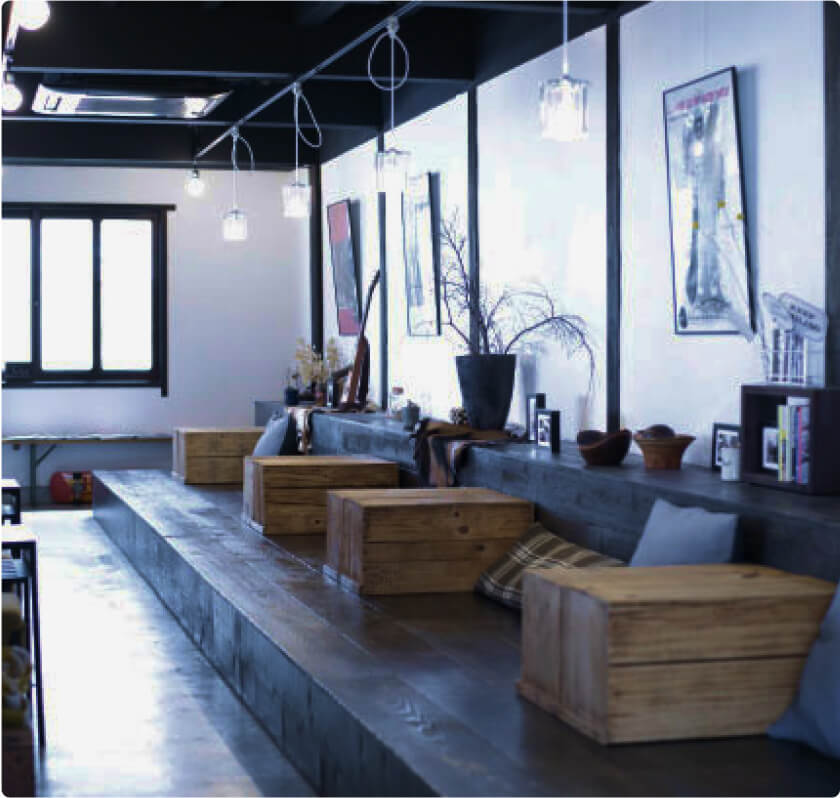
Sugar Ray Dining and Bar
A flavor of Sydney, Australia can be found in Daishoji at Sugar Ray Dining and Bar. The Japanese owner chef Shota Sato returns to Japan after having worked as head chef in a renowned restaurant in Sydney for over 10 years. Many of the vegetables on the menu come from Chef Sato’s wife’s family farm, Shimode Farm. Dishes of locally sourced ingredients paired with unique wines make for the perfect way to end the day.
Address
1F Brother Build. 1-10, Daishoji Higashi-machi,
Kaga, 922-0816 Ishikawa
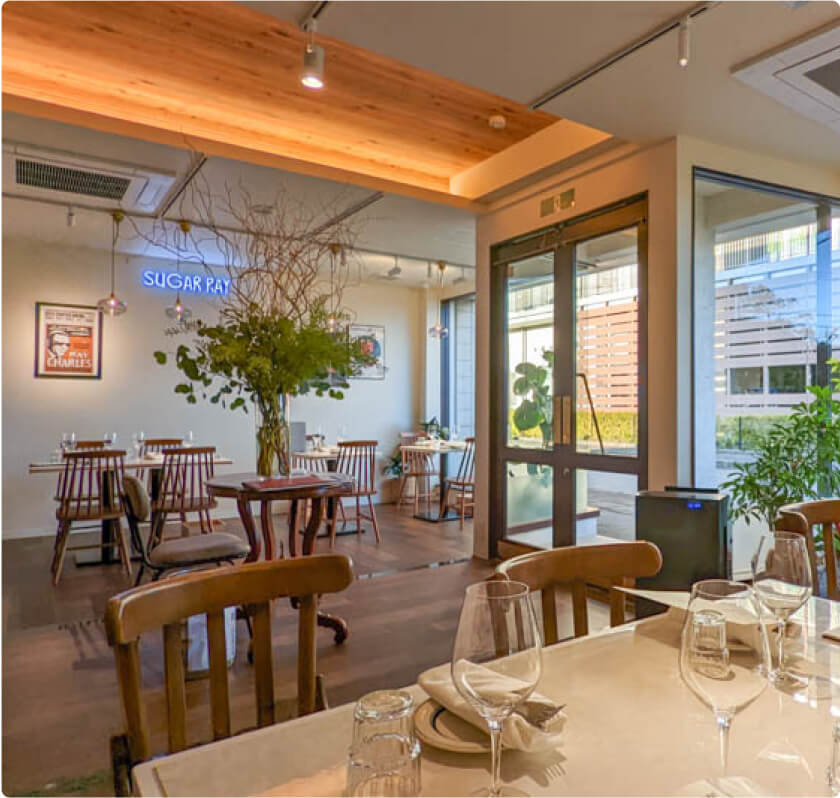
5
Hashitate Course
Enjoying Seafood at Kassen Shintoku
In the small harbour of Hashitate, facing the sea, sits the Kassen Shintoku fish shop-restaurant which has been a town institution since 1985. Here you can buy the fresh fish of the day, caught in the rich waters of the Sea of Japan.
It is with a big smile that Mr. Yuya receives us in his shop. Here we are in the fish centre of Hashitate. A wide variety of fish and shellfish are on display. Customers flock here to buy the most beautiful specimens, brought in the day before.
Mr. Yuya sells and cooks seafood caught directly from his grandfather's boat. In the Yuya family, the sea has been the food resource for generations. The boat goes out to the sea at around 11pm, and doesn’t arrive back until the next day. If the fishing has been successful, the ships return at around 3-4pm. The fishing takes place in the surrounding waters. The products are sorted into groups according to species and size. In winter, more than 50 species can be caught on one trip. The sorting takes time, and the fish are then sold at auction.
Winter is the trawl fishing season, and the season for crustaceans- in particular for sweet shrimp and snow crab. These giant crabs, which are the pride of the Hokuriku region, are mostly caught at night.In spring, the main products are sea bream and flatfish, known as hirame, which are eaten as sashimi. Net fishing is used, in order to catch horse mackerel and Japanese Spanish mackerel.
Late spring and into summer, is shellfish season. Turban shells and rock oysters are cooked and collected by hand, often while diving, and are eaten as sashimi. And in summer, it is the time for collecting seaweed such as mozoku.
Address
2-11 Tajirimachihamayama,
Kaga 922-0552 Ishikawa
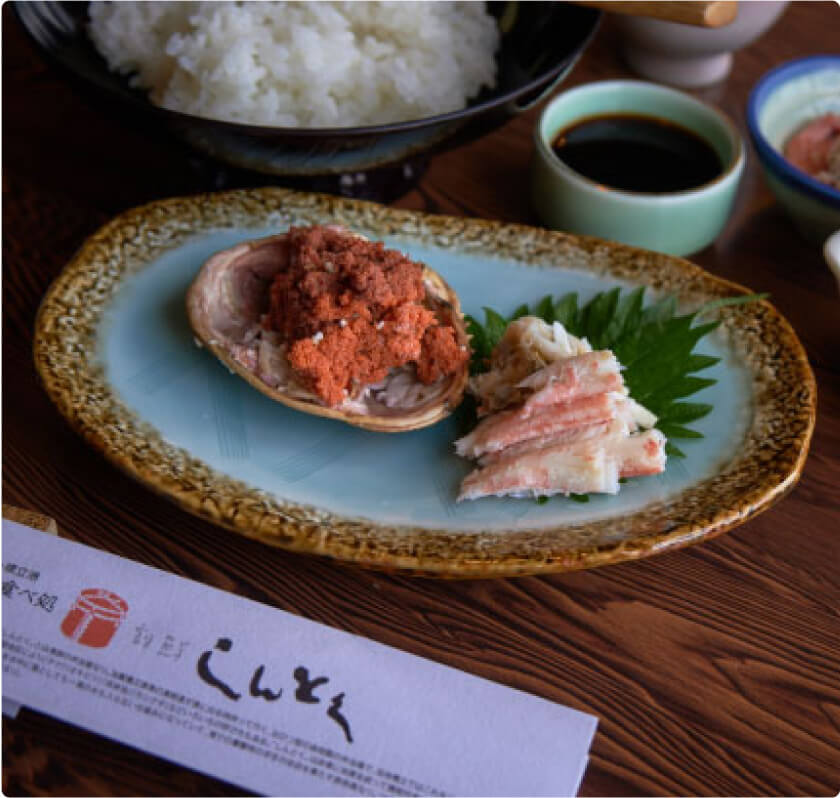
Hashitate Fish Market
Located at the southern end of Ishikawa Prefecture, Hashitate Fishing Port is known as one of the leading fishing ports in the prefecture. A great variety of seafood is unloaded at this peaceful fishing port throughout the year. Auctioning of the fish often occurs in the early morning hours, however in Hashitate, the boats return back to the port in the afternoon and the auction begins around 6pm. It is rare sight for outsiders to be allowed into the fishing ports. The market provides highly sought-after delicacies such as amberjack, sweet shrimp, and snow crab, attracting masses of tourists seeking a culinary experience rarely available elsewhere. Crowded with fishing boats, this small port also evokes a certain nostalgia and provides fantastic photo opportunities.
Address
Hamayama-2-30 Tajirimachi,
Kaga, 922-0552 Ishikawa
